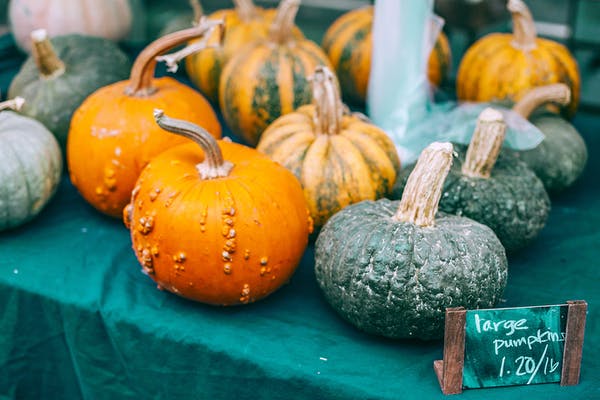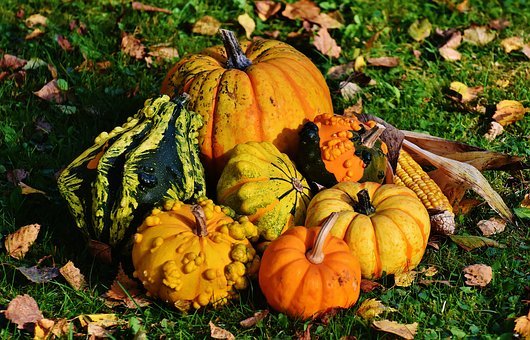Pumpkins aren’t simply for carving on Halloween or creating pies on Thanksgiving. This rich food is packed with nutrients, so that you may benefit from pumpkin any time of year. Pumpkin and pumpkin seeds are common ingredients in many households, particularly during the holidays, and they are frequently used in flavorful recipes like pies, curries, cookies, and trail mix. Although most people prefer to eat them cooked or roasted, pumpkin and pumpkin seeds can also be consumed raw. However, there are essential distinctions between raw and cooked variants, particularly in terms of flavor, texture, and nutritional content.
When you want to enjoy the exquisite flavors of Fall, you can eat raw pumpkin. This delicious dessert is filled with all your favorite Fall spices. You can use pureed pumpkin, maple syrup, vanilla extract, salt, and spices to make it.
Pumpkin is a nutrient-rich food when eaten raw. A 1-cup portion has barely 30 calories, 0.12 grams of fat, 1.16 grams of protein, and 7.54 grams of carbs, according to USDA FoodData Central. Vitamin A is the most prominent nutrient in pumpkin. The same 1-cup serving contains 494 retinol activity equivalents and 9,875 international units. This provides more than half of the RAE or recommended intake, which is 900 and 700 micrograms for men and women over 14, according to the University of Florida IFAS Extension.

Is it Okay to Eat Raw Pumpkin?
Your risk of food poisoning may rise if you consume uncooked foods. Particularly about raw pumpkin seeds, which could contain dangerous bacteria like Salmonella and E. coli. These bacteria can potentially cause foodborne illness, resulting in symptoms like diarrhea, vomiting, fever, and cramps if consumed. Additionally, drying and sprouting seeds do not get rid of these infections.
Pumpkin seed-related outbreaks of foodborne illness are uncommon, nonetheless. Regulatory agencies like the Food and Drug Administration (FDA) collaborate closely with food producers to prevent contamination. You should adequately boil pumpkin and pumpkin seeds if you have any concerns about food poisoning. Additionally, it’s critical to follow reasonable food safety procedures, keep pumpkin seeds in an airtight container, and consume them within two to three months.
What is the Flavour of Raw Pumpkin?
Raw pumpkin and raw pumpkin seeds have a distinctive flavor compared to cooked versions. The taste of raw pumpkin is harsh, fibrous, and fresh. Additionally, the surface has a stringy, slippery texture. We advise grating or pureeing your raw pumpkin before eating it because it is rough. The taste and texture of raw pumpkin seeds are more mellow and chewy. While raw pumpkin lacks the flavor and appeal of its cooked cousin, it still offers plenty of vitamins and nutrients and is a beautiful addition to soups, salads, and sandwiches.
Health Benefits
The nutritional value of pumpkin is considerable, especially its vitamin A. However, too much vitamin A can cause a condition known as hypervitaminosis A. This condition may result in symptoms such as jaundice, yellow skin, and kidney damage. In addition, vitamin A can interfere with growth in young children. To avoid this, eat only small amounts of pumpkin or consume it in supplement form.
A cup of cubed raw pumpkin contains 170 percent of the daily recommended value of vitamin A. Vitamin A helps protect cells from damage and promotes normal vision. It also acts as an antioxidant. The vitamin A in pumpkin also supports the immune system and promotes faster healing of wounds, and it may even lower the risk of hypertension. Moreover, pumpkins contain other vitamins and minerals essential for good health. You can also use pumpkin in recipes and replace butter to reduce calories.
Nutritional Value
The vitality of Vitamin A. The nutritional value of pumpkin is high and has numerous health benefits. Its high level of micronutrients and conventional food status makes it a viable choice to help combat malnutrition and food shortages in areas like the Lake Victoria Basin. The following table describes the nutritional value of pumpkin:
Pumpkin is high in vitamin A, which boosts the immune system and is a critical component of year-round protection against colds and flu. Consuming large quantities of vitamin A and taking supplements can lead to overexposure to the vitamin. People with excessive vitamin A toxicity may experience yellow skin and jaundice. A diet rich in vitamin A may benefit those with high blood pressure, but consuming too much can lead to hypervitaminosis.
Safeness for Children
You may wonder if feeding your baby raw pumpkin is safe. This delicious, nutritious vegetable is available at your local store or pumpkin patch. If you are unsure whether giving your baby pumpkin is safe, try pureeing it first. This food contains high amounts of fiber, which helps prevent constipation. Additionally, it is rich in unsaturated fats and amino acids. In addition, pumpkin seeds are an excellent source of vitamins and minerals.
Although eating pumpkin is generally safe, it is possible to get food poisoning from consuming it raw. Pumpkin seeds are contaminated with E. coli, which causes diarrhea, stomach ache, fever, and vomiting. Though these outbreaks are rare, they can occur. For this reason, pumpkins should always be consumed in moderation. The food and drug administration (FDA) has implemented steps to prevent food contamination.
Precautions
Pumpkins are an excellent source of vitamin A, potassium, and fiber. They’re also low in calories and loaded with phytochemicals, which protect us from disease and carcinogens. Whether you eat it raw or cooked, pumpkin offers a lot. Try cutting a thin slice of pumpkin into thin strips and eating it like a dip instead of a traditional potato chip.
You can feed your baby pumpkin as soon as they’ve started to grow milk teeth. In addition, you can introduce it to your baby as puree. Pumpkin contains several vital nutrients, calcium and magnesium, which are essential for strengthening bones and teeth. In addition, pumpkin is high in phosphorus, improving brain functions and balancing hormone levels. As a result, your child will grow into a healthy, happy human.
Limit your Pumpkin Intake
The nutritional benefits of pumpkins are primarily concentrated on vitamin A. According to the U.S. National Library of Medicine, overindulging in vitamin A-rich foods like pumpkin or carrots can result in hypervitaminosis A, so it is not advisable to consume more than is advised. Too much vitamin A can also result from taking pills and multivitamins that include the nutrient. Short-term occurrences of this vitamin A poisoning can result in jaundice or a yellowing of the skin and eyes. Kidney and liver damage are among the more severe consequences. Because it can impede growth and appropriate development, an excess of vitamin A can be a significant issue for babies and young children.
Symptoms of Food Poisoning
If you’ve ever had a meal that contained uncooked food, you’ve probably experienced the dreaded gastrointestinal upset called food poisoning. This horrible illness usually takes 24 to 48 hours to clear up. Its symptoms start as mild nausea, followed by a fever and other disorders. Depending on the cause, you may experience other symptoms like diarrhea and vomiting. If you experience any of these symptoms, seek medical attention right away.
There are several symptoms of food poisoning caused by raw pumpkins. Unlike other foods, pumpkin seeds are not safe to consume during pregnancy or lactation. You should limit your intake of pumpkin seeds to small amounts. If you do eat pumpkin seeds, make sure you chew them thoroughly before swallowing them. Symptoms of food poisoning include vomiting, diarrhea, fever, and stomach aches. The first few days following eating the pumpkin may cause diarrhea, which will lead to further complications.
Best Pumpkin Recipe
Raw pumpkin is a beautiful stand-alone snack or side dish thanks to its robust, rich flavor. You can eat canned pumpkin raw, but cutting it into cubes is one of the best ways to consume pumpkin. However, you can add other ingredients without jeopardizing their nutritional content if you want to keep them interesting for you. To give it a dessert-like flavor without all the fat and sugar, sprinkle cinnamon. Even flaxseeds can be added for a crunchier texture. Please don’t overlook the pumpkin seeds either; they are a delicious treat rich in magnesium, which helps preserve nerve and muscle function.
Can you Eat Green Pumpkins?
Contrary to popular perception, you can eat any pumpkin you can grow. This also applies to unripened orange pumpkins that have a greenish tint or are still green. A green pumpkin might not cook as well as a fully ripened one, and the flavor will not be as rich as you are used to.
How can you Know When a Pumpkin is Ready?
Give the pumpkin a light knock as if you softly knock on a door. It’s a good sign that the pumpkin is ripe if it sounds hollow. Another sign of ripeness is the color of the skin. The pumpkin is ready for harvesting if it has grown rich in color and is starting to sprout “warts.”
How should a Pumpkin be Stored After Being Harvested?
Pumpkins should be stored after curing in a single layer in an excellent, dry location with humidity levels between 50 and 60 percent and temperatures between 50 and 60 degrees Fahrenheit. In colder climates, a cool basement, an unheated attic, or a bedroom make suitable storage possibilities.
When are Pumpkins Ready for Harvesting?
This should happen in late September or early October if the vines are still vigorous and haven’t been harmed by mildew, insects, or frost. The secret is to select your pumpkins before freezing weather sets in.
Conclusion
Although foodborne illness outbreaks from eating raw pumpkin and pumpkin seeds are uncommon, natural foods may contain hazardous germs. Although raw pumpkin and its origins may have a little more vitamins and minerals, their flavor and texture are frequently regarded as less pleasant. They might also be lower in antioxidants and higher in antinutrients than their cooked equivalents. Whether you consume these items cooked or raw, remember to practice good food safety and include them in a balanced diet.

